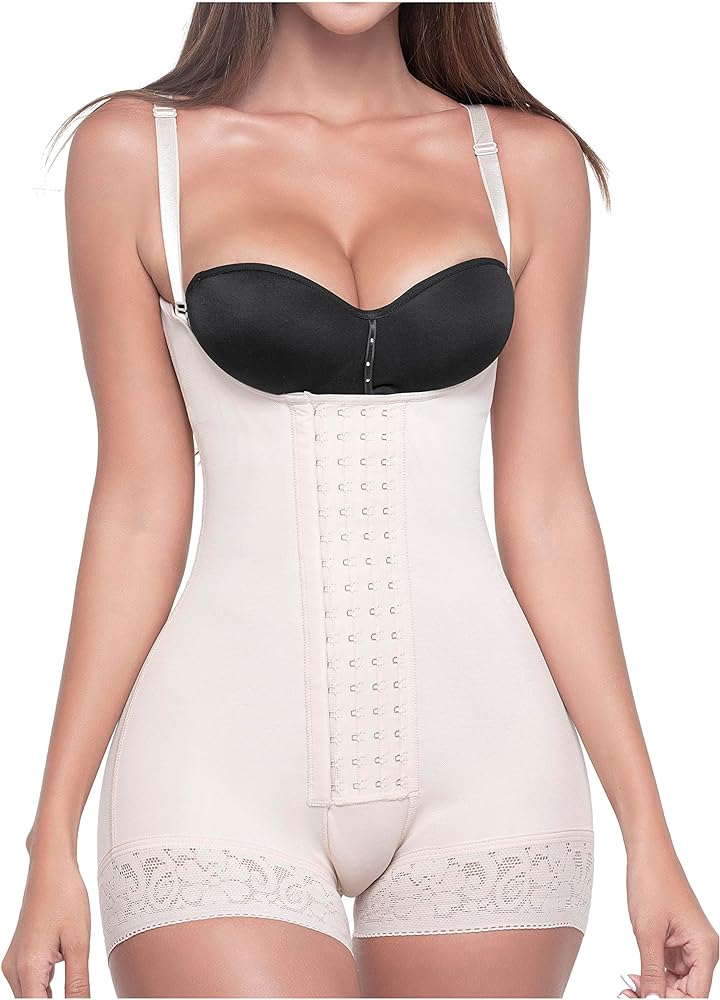Liposuction Recovery Journey
Immediate Needs
After liposuction, immediate care is crucial. Patients often wear their first compression garment, also known as body shapers, within hours of surgery for surgical recovery as recommended by their surgeon to reduce hematoma. This initial stage of surgical recovery, particularly after liposuction or other cosmetic surgery, focuses on reducing swelling and preventing fluid buildup through the application of gentle pressure.
These garments, often referred to as body shapers, are usually more rigid, providing high-level support and gentle pressure to the treated areas following cosmetic surgery, with features like an accessible crotch for convenience. Surgical compression garments help shape the body as it heals from the trauma of surgery, reducing hematoma after a liposuction procedure.
Transition Phase
The second step in recovery begins a few weeks post-lipo. Here, patients transition to less restrictive garments. These still offer support but allow for greater movement and comfort during the day.
It’s essential to measure for this new garment as the body’s shape changes with reduced swelling. This ensures optimal fit and effectiveness in supporting tissue healing.
Long-Term Support
The final phase introduces even more flexible compression wear. These garments continue to aid in shaping the body but focus on long-term comfort and contouring.
Patients might wear these for several months post-surgery, gradually moving towards normal clothing as they recover fully. It marks the end of the structured recovery process but not the journey to full health.
Science Behind Healing with Compression
Pressure Benefits
Compression garments play a crucial role in the healing process. They apply gentle pressure to the area treated by liposuction. This consistent pressure helps reduce swelling and bruising. Swelling is a natural response of the body to surgery. By controlling it, patients can experience less discomfort.
The application of pressure also prevents fluid accumulation. This reduces the risk of developing a hematoma, a pocket of blood outside blood vessels. Patients report feeling more comfortable during their recovery when wearing these garments.
Circulation Enhancement
A key benefit of compression garments is their ability to enhance blood circulation. Improved circulation speeds up healing by ensuring that essential nutrients reach the surgery site. It also helps in flushing out harmful substances from the body.
Good circulation reduces the risk of complications post-surgery. Studies support that better blood flow contributes to faster recovery times. Patients often notice an improvement in their overall comfort levels when their circulation is supported through compression.
Medical Support
Medical theories and studies back the use of compression garments in post-operative recovery. They highlight how these garments aid in stabilizing the surgical area and ensuring optimal healing conditions.
Healthcare professionals often recommend compression wear as part of a comprehensive recovery plan. Their endorsement underscores the importance of these garments in achieving the best possible outcomes after liposuction.
Role of Compression in Recovery
Physical Support
Compression garments play a crucial role in the recovery process after liposuction. They offer significant physical support, which is essential for healing. These garments help reduce swelling by applying gentle pressure on the treated areas. This pressure prevents fluid accumulation, a common post-surgery issue.
They also aid in contouring the body. By ensuring a snug fit, compression garments encourage the skin to adhere to underlying tissues. This results in a smoother, more defined shape as the body heals.

Psychological Comfort
Beyond physical benefits, these garments provide psychological comfort to patients. Wearing them can make individuals feel more secure about their recovery. It gives them peace of mind, knowing they are taking an active step towards healing.
Patients often report feeling less pain and discomfort when using compression garments. This comfort can significantly improve their overall recovery experience.
Healthcare Recommendations
Following a healthcare professional’s advice on compression levels and duration is vital. They tailor recommendations to each patient’s unique needs, ensuring optimal recovery outcomes.
Professionals determine the right amount of pressure and how long the garment should be worn. Adhering to these guidelines can make a big difference in the recovery process.
Features of Effective Compression Garments
Ease of Use
Immediately after surgery, Step 1 garments are crucial. They often feature hook-and-eye closures or zippers. These elements make them easy to put on and take off, which is essential when mobility is limited.
The design helps patients start their recovery journey with less hassle. Comfort during this initial phase can significantly impact the overall healing process.
Design Considerations
For Step 2 and Step 3 garments, manufacturers prioritize comfort without sacrificing effectiveness. Seams are typically sewn on the outside to prevent irritation against sensitive post-surgery skin.
Materials used in these stages are stretchy yet firm, ensuring the garment molds to the body’s changing shape while providing necessary support. This balance between snug fit and flexibility aids in a smoother recovery.
All-Day Support
Effective compression garments must offer support that moves with the body. They should feel like a second skin, offering all-day comfort without compromising on their primary function: aiding recovery.
Garments that achieve this allow patients to go about their daily activities with ease, knowing they’re supported in every movement. This constant support is vital for effective healing and returning to normal life post-surgery.
Choosing the Right Compression Garment
Accurate Measurement
Measuring accurately is crucial. It ensures that your compression garment fits well and offers the benefits you need during recovery. After liposuction, your body’s dimensions can change rapidly. This makes selecting the right size challenging.
You should measure your body at multiple points during recovery. This helps in finding a garment that fits perfectly at each stage. Use a soft tape measure for accuracy. Wrap it around the largest part of the area treated by liposuction.
Healthcare Consultation
Consulting with healthcare professionals is essential. They guide you in choosing the right type of compression garment based on your specific procedure.
Your doctor understands how different garments support healing. They can recommend ones with features like an accessible crotch for convenience or varying levels of compression for different stages of recovery. Their advice ensures you select a garment that aligns with your healing progress.
Versatile Garments
Look for garments that offer versatility throughout recovery. Some compression garments are designed to be adjustable, fitting snugly as your body changes shape.
Choosing such garments can be cost-effective and convenient. They adapt to your body, providing consistent support without needing multiple sizes. Features like adjustable straps or extenders enhance their versatility, making them suitable for various stages of healing.
Benefits of Using Compression Garments
Reduced Recovery
After choosing the right compression garment, patients often experience reduced recovery time. These garments help decrease swelling and bruising by applying even pressure to the area operated on. This not only speeds up the healing process but also makes it more comfortable for the patient.
They limit movements that could disrupt the healing tissue. As a result, individuals can return to their daily routines sooner.
Minimized Scarring
Another significant benefit is minimized scarring. Surgical compression garments keep the skin tightly bound, promoting optimal healing conditions. They ensure that incisions heal neatly and are less likely to develop into prominent scars.
This aspect is crucial for areas visible when clothed lightly or in swimwear. It gives patients confidence in their appearance post-recovery.
Improved Shaping
Compression garments play a vital role in improved shaping of the treated area. They help contour the body by ensuring that skin and tissues adhere correctly to their new outlines post-liposuction.
This support leads to more satisfying results from the surgery. Patients notice a smoother, more defined silhouette as swelling subsides.
Psychological Advantages
Wearing these garments also offers psychological benefits. They provide a sense of security during the vulnerable post-surgery period. Feeling supported contributes significantly to overall well-being and confidence in recovery progress.
Promoting Active Lifestyle
Lastly, compression garments can encourage a more active lifestyle after recovery. By offering support and improving physical appearance, they motivate individuals to maintain or enhance their fitness levels.
This can lead to lasting lifestyle changes towards better health and activity.
Certified Medical Products for Optimal Healing
Quality Assurance
Quality materials play a crucial role in the effectiveness of compression garments. It’s not just about the tightness; it’s about how these garments support the skin and underlying tissues after surgery. For optimal healing, patients should seek out medical-grade compression garments, like those offered by Marena. These products are designed with patient care in mind, ensuring reduced swelling and improved comfort during the recovery process.
Medical-grade garments undergo rigorous testing to meet health and safety standards. This certification means they’re safe to use for extended periods and can significantly improve the recovery experience.
Certification Criteria
The certification of medical products is no small feat. It involves a series of tests and evaluations to ensure that the product meets strict health and safety guidelines. For compression garments, this means examining how well they provide support, reduce swelling, and conform to the body’s shape without causing discomfort or restricting movement.
Patients should always verify the authenticity and certification of their compression garments. This step guarantees that they are receiving a product capable of offering optimal healing benefits post-surgery.
Purchase Verification
Before making a purchase, patients are encouraged to check the garment’s certification details. Many reputable suppliers will provide this information on their website or ads. Verifying these details ensures that you’re investing in a high-quality product that will aid in your recovery process.
Finding the Best Compression Solution
Step Guidance
Navigating the selection of compression garments can seem daunting at first. However, the Marena website simplifies this process with clearly marked tags for Step 1, Step 2, and Step 3 garments. These steps correspond to different stages of recovery, ensuring you find a garment that matches your current needs.
For initial post-surgery support, look for Step 1 garments. They offer maximum compression to reduce swelling and support healing. As you progress, Step 2 garments provide moderate compression during the intermediate phase of recovery. Finally, Step 3 garments are designed for long-term use, offering lighter compression to smooth and shape as you return to daily activities.
Professional Advice
It’s crucial to consult with medical professionals before selecting a compression garment. They can offer personalized advice based on your surgery type and healing stage. Reading product reviews can provide insights into how others have benefited from specific garments.
This approach ensures you choose a compression solution tailored to your unique recovery journey.
Quality Investment
Investing in high-quality compression garments is essential for a smoother recovery journey and better long-term results. High-quality materials offer consistent compression without sacrificing comfort, making them an invaluable part of your recovery toolkit.
Remember, the right garment not only supports physical healing but also boosts confidence as you navigate the post-surgery period.
Closing Thoughts
Navigating your liposuction recovery journey demands the right tools, and compression garments stand out as essential allies. They’re not just fabric; they’re science-backed aids that speed up your healing, reduce swelling, and shape your body post-surgery. By choosing certified medical products and the best compression solution tailored to your needs, you’re setting the stage for optimal healing and comfort. Remember, the right garment makes all the difference in your recovery process.
Your journey doesn’t have to be daunting. Armed with knowledge about the features of effective compression garments and their benefits, you’re ready to make an informed choice. Let this guide be your compass in finding the perfect fit that supports your recovery every step of the way. Don’t settle for less; ensure you opt for quality, comfort, and efficacy. Start exploring your options now and embrace a smoother recovery ahead.
Frequently Asked Questions
How do compression garments aid in liposuction recovery?
Compression garments promote blood circulation, reduce swelling, and support the healing tissues, accelerating the recovery process after liposuction.
What should I look for in an effective compression garment?
Look for breathable materials, adjustable fit, and medical-grade compression levels to ensure both comfort and effectiveness in your recovery journey.
Can wearing a compression garment improve the final results of liposuction?
Yes, consistent use of a properly fitted compression garment can improve the contouring effects of liposuction by minimizing swelling and supporting skin retraction.
How long should I wear a compression garment after liposuction?
Typically, it is recommended to wear a compression garment for 4 to 6 weeks post-surgery, but always follow your surgeon’s specific advice based on your individual recovery progress.
Are all compression garments suitable for post-liposuction recovery?
No, not all compression garments are created equal. It’s important to choose one certified for medical use to ensure optimal healing benefits.
Where can I find high-quality compression garments for my recovery?
Seek recommendations from your healthcare provider or look for reputable suppliers specializing in certified medical-grade compression solutions.





